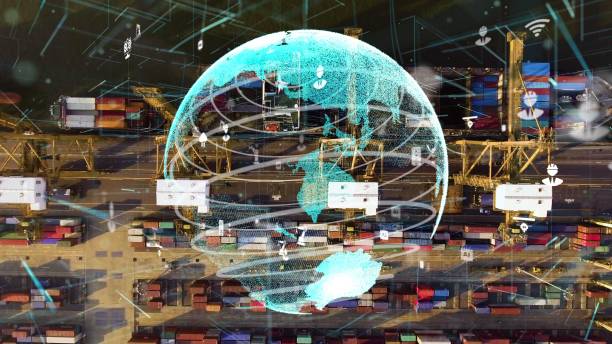Digital tools for smart and sustainable ports
By KENSA Logistics
Connected cranes, autonomous vehicles, drones, blockchain... after spending so much time on the sidelines of digital transformations, ports are now fully embracing this environment. The truth is that anyone wishing to be truly competitive has started a process beyond a point of no return. Yes: digitalization is the way in which port facilities are going to become more efficient and sustainable spaces. The planet and consumers are demanding it
Traditionally, ports have been spaces whose functions are quite simple: connecting oceans and terra firma, making loading and unloading operations easier. However, things are no longer simple and, currently, port facilities are an essential part of global logistics networks and offer increasingly more added value services. These services help differentiate them from others and be more competitive as well as making more efficient and profitable once digitalized.
This is why the scenario is changing after staying on the sidelines with respect to digitalizing processes even when the industry in general had undertaken them. By now, all the major port facilities have entered this impressive race. They have come to the conclusion that by digitalizing their activities they can offer greater agility, more profitability and highly sought-after sustainability.
Digital tools for improvement
These are some of the technologies that are being introduced in the world’s major ports:
- RTLS Technologies for locating people and objects in real-time. They allow for the tracking of assets and, as a result, they improve the general management of logistics activity.parentes durante toda la cadena de suministro, transporte, recepción y salida de vehículos.
- Blockchain to guarantee transparent processes along the entire supply chain, transport, reception and exit of vehicles.
- Predictive maintenance. To this end, key equipment is fitted with sensors and a large amount of data is obtained. With this data, different Artificial Intelligence tools predict the working of these tools and prevent stoppages due to technical faults.
- Connected cranes which help ensure constant communication between them, the vehicles and the people operating them. Thanks to these tools, traffic safety in the port is improved.
- Drone technology is used to observe space and maintain the highest levels of safety in the facilities. Small vessels fitted with cameras also enable highly accurate measurements to be made of surface areas and help obtain valuable data for general management.
- Autonomous vehicles. Entire fleets are being built which can be connected to a data center where they can be processed. It is a technology that relies on research done on automation and has the great advantage of being able to operate in enclosed spaces.
These digital tools help turn port facilities into more productive, profitable and sustainable spaces. Increasingly, ports are joining this unstoppable revolution. The reason is that those failing to make this transformation will simply remain on the fringes of the market




